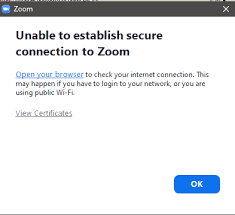Unleashing the Potential of Advanced Voice Textualization in Content Creation
In today’s digital age, content creation has become an integral part of our lives. Whether you are a writer, blogger, content marketer, or social media influencer, the demand for fresh, engaging, and informative content is ever-growing. As the content creation landscape evolves, so do the tools and technologies that assist creators in their endeavors. One such groundbreaking innovation is the advanced voice textualization, which has the potential to revolutionize the way we create content.
The Evolution of Content Creation
Content creation has come a long way from traditional forms of writing and publishing. Smart audio processing software It has expanded to encompass a wide range of mediums, including blogs, social media, podcasts, and videos. With the rapid growth of digital platforms and the internet, the need for quality content has never been greater.
Traditionally, content creators relied on their typing skills and writing abilities to craft articles, blog posts, and social media updates. While these skills remain vital, technological advancements have offered creators new ways to produce content efficiently. One of the most promising developments in this regard is advanced voice textualization.
What is Advanced Voice Textualization?
Advanced voice textualization is a technology that converts spoken words into written text with remarkable accuracy. It utilizes natural language processing and speech recognition algorithms to transcribe spoken language into text. This can be done in real-time or by processing recorded audio, making it a versatile tool for content creators.
The Benefits of Advanced Voice Textualization
- Improved Efficiency: Advanced voice textualization significantly speeds up the content creation process. Creators can speak their thoughts and ideas, allowing them to generate content at a much faster rate compared to traditional typing.
- Enhanced Accessibility: This technology makes content creation more accessible to those with physical disabilities that may hinder typing or writing. It levels the playing field and enables a more diverse range of voices to be heard.
- Reduced Writer’s Block: Many writers grapple with writer’s block, a creative roadblock that can stifle productivity. Voice textualization can help by allowing writers to speak their ideas freely, reducing the mental barriers that often accompany traditional typing.
- Multitasking: Creators can use voice textualization to draft content while performing other tasks. This ability to multitask is invaluable in our fast-paced, multitasking world.
- Voice Personality: With advanced voice textualization, the personality and tone of the creator’s voice can shine through in their content, adding a personal touch that can resonate with the audience.
Applications in Content Creation
- Blogging: Bloggers can dictate their articles instead of typing them out, enabling a more fluid and conversational writing style. This is particularly beneficial for long-form content.
- Podcasting: Transcripts of podcast episodes can be easily generated using voice textualization, making content searchable and more accessible to those who prefer reading to listening.
- Social Media: Content creators can craft engaging social media updates by speaking their thoughts, which can then be converted into text for posting on various platforms.
- Video Content: Voice textualization can streamline the process of creating video scripts, making it easier to plan and edit video content.
- Content Accessibility: By providing text versions of audio and video content, advanced voice textualization improves accessibility for individuals with hearing impairments.
Challenges and Considerations
While advanced voice textualization offers many benefits, it’s important to consider some of the challenges:
- Accuracy: While technology has come a long way in speech recognition, it’s not always 100% accurate, which may require manual corrections.
- Editing and Polishing: Transcripts may need editing and polishing to ensure they read well and are error-free.
- Privacy: The use of voice textualization raises concerns about data privacy, as voice recordings need to be processed by external systems.
- Cost: Depending on the service or software used, there may be associated costs for voice textualization.
Conclusion
Advanced voice textualization is a game-changer in content creation. It has the potential to enhance efficiency, accessibility, and the overall quality of content. While it may not replace traditional writing entirely, it provides content creators with a powerful tool that can be used in conjunction with their existing skills. As this technology continues to evolve, we can expect to see more creators embracing it to unleash their creative potential and reach new heights in their content creation endeavors.



